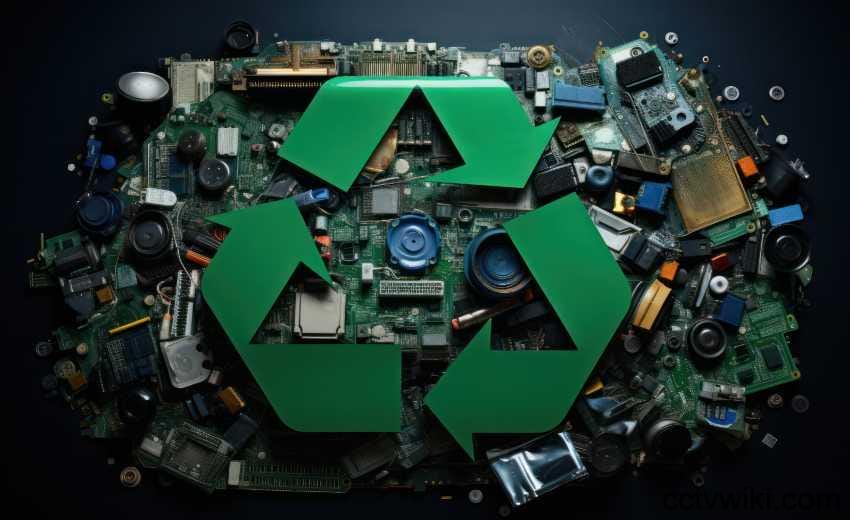The physical security industry, a long-time devotee of durable but environmentally taxing plastics, is facing a reckoning. Governments, regulators, and customers are all demanding a shift: ditch the old plastics and embrace eco-friendly alternatives.
This push comes as the regulatory landscape undergoes a seismic shift, with the European Union leading the charge through initiatives like the Ecodesign for Sustainable Products Regulation (ESPR), a key part of its broader Sustainable Product Policy Initiative.
The goal? To make “green” products the gold standard across all sectors. For security manufacturers, this means a top-to-bottom re-evaluation, from the raw materials used in cameras and access control systems to the disposal of these products at the end of their life.
“Initiatives like this are urging companies to prioritize the use of more sustainable materials, and making sustainability a priority for stakeholders,” wrote Ausra Reinap, Senior Environmental Engineer at Axis Communications, in a recent blog post.
A sector built on plastics
For years, surveillance cameras, access readers, and other security devices have been engineered to withstand the elements, thwart vandals, and operate continuously for years on end. Polycarbonate-based plastics, derived from fossil fuels, have been the go-to material, prized for their toughness and longevity.
But those very properties now pose a problem. When discarded, many of these plastics linger in landfills for decades, even centuries. Others are burned, releasing carbon emissions that exacerbate climate change.
The paradox is clear: the resilience that makes these plastics ideal for security applications also makes them a threat to the planet.
New options enter the pipeline
The good news is that the plastics industry has made considerable strides in developing sustainable alternatives over the past decade. Security manufacturers now have access to a growing selection of materials, including bio-based plastics made from renewable resources and recycled plastics given a second life through industrial processes.
These materials are no longer limited to disposable packaging or short-lived products. They’re becoming increasingly robust, capable of withstanding the same stresses as traditional plastics.
As Reinap explained, “There are now a growing number of more robust and long-lasting alternatives to virgin plastics, which are increasingly recognized as high-end materials to be used in surveillance products.”
For integrators and end-users, this means sustainable materials could soon become commonplace in deployments without compromising on durability.
Quality cannot be compromised
In the security world, durability and safety are paramount. Outdoor cameras must function flawlessly in blazing sun, torrential rain, or sub-zero temperatures. Devices used in critical infrastructure must adhere to stringent fire safety and electrical standards.
This makes the transition to sustainable plastics particularly tricky. The industry can’t afford reputational damage or functional failures caused by unproven materials. Reinap underscored this point: “One challenge is that safety requirements may not be in line with sustainability requirements. Companies can’t jeopardize safety in favor of sustainability.”
Manufacturers are therefore putting sustainable materials through rigorous testing, often exceeding the standards applied to conventional plastics. These tests include accelerated aging simulations, flammability assessments, and exposure to harsh chemicals and UV light.
The encouraging news? Some recycled and bio-based plastics are already outperforming their fossil-based counterparts in certain areas of resilience and effectiveness.
Getting ahead of regulation
The long lifecycles of security products present another challenge. A surveillance camera installed today might still be in service a decade from now. But what if the plastic used in its construction becomes restricted by future regulations?
Forward-thinking manufacturers are already taking steps to “future-proof” their product lines by identifying and phasing out potentially problematic substances, such as brominated and chlorinated flame retardants, before they are legally mandated to do so.
“Phasing out substances in advance of legal requirements not only ensures readiness for compliance, but provides a competitive advantage,” Reinap noted.
The supply chain challenge
Choosing sustainable plastics is more than just a technical decision; it’s an ethical and social one as well. True sustainability demands transparency about the origin and production of materials.
For example, bio-based plastics can be derived from crops. However, if these crops are grown on land that could otherwise be used to produce food for local populations, the “sustainable” choice could have unintended negative consequences.
“There is a lot to dig into to ensure security companies are making the most sustainable choice possible, while balancing it with developing a high quality, high performance end product,” Reinap explained.
This necessitates close collaboration with material providers, demanding visibility into supply chains, and carefully weighing the trade-offs between environmental, social, and performance factors.
The cost question
Despite progress, sustainable plastics still command a higher raw material price compared to conventional options. This can be a hurdle for manufacturers already catering to price-conscious customers.
The challenge is compounded when products need to be redesigned to accommodate new materials, requiring fresh rounds of certification and compliance checks.
However, industry analysts point out that economies of scale are starting to alleviate this burden. As more companies commit to sustainable plastics, costs are expected to decrease.
Reinap echoed this optimism: “The proliferation of more sustainable materials on the market is inevitably making production more cost-efficient. This trend will continue as more manufacturers opt for recycled and bio-based materials over traditional plastics.”
Redesigning for sustainability
Switching to sustainable materials doesn’t always mean starting from scratch. Many manufacturers are experimenting with upgrading existing products by replacing certain components with recycled or bio-based alternatives.
This requires investment in design modifications and extensive retesting, but recent advancements in enhancing the quality of recycled plastics are making these transitions more viable.
Manufacturers must also consider the entire lifecycle of their products, from production to recycling and disposal. A more circular approach, where end-of-life devices are collected and reprocessed into new materials, is seen as the ultimate goal.
Towards a resilient, sustainable future
The security industry stands at a pivotal moment. On one side is a long-standing reliance on plastics that, while functional, impose an environmental cost. On the other is a future where cameras and access control devices are built from sustainable materials, designed for circularity, and compliant with stringent global regulations.
“Innovation in the plastics industry has provided more sustainable options to choose from than ever before, many of which offer the same – if not greater – quality and longevity as their virgin plastic counterparts,” Reinap wrote.
The transition won’t happen overnight. For many manufacturers, “green” will remain an aspiration rather than the norm in the short term. But momentum is building, and those who act early could reap reputational and competitive rewards.
The role of integrators and consultants
For security systems integrators, who play a key role in deploying hardware at scale, the shift in materials raises practical questions.
Will sustainable devices carry a premium price? How should end-users be educated about the environmental benefits of choosing sustainable products?
Consultants may also need to revise specifications to incorporate environmental criteria, not just performance or price. As regulations become stricter, compliance could become a crucial factor in winning bids.
Conclusion
The global push for sustainability is reshaping industries from automotive to construction. The security sector, with its dependence on plastics, cannot be an exception. The combination of regulatory pressure, customer demand, and technological innovation is making the move to sustainable plastics not just desirable, but inevitable.
As Reinap summarized in her blog post: “The move to a sustainable future doesn’t come without its challenges, and it may be some years to come before ‘green’ is seen as the norm. Yet forward-thinking manufacturers are already opting for sustainable materials that have a more limited impact on the environment while providing customers with high-quality, long-lasting, and resilient products.”
For an industry that prides itself on resilience, making products environmentally resilient may be its next big test.

